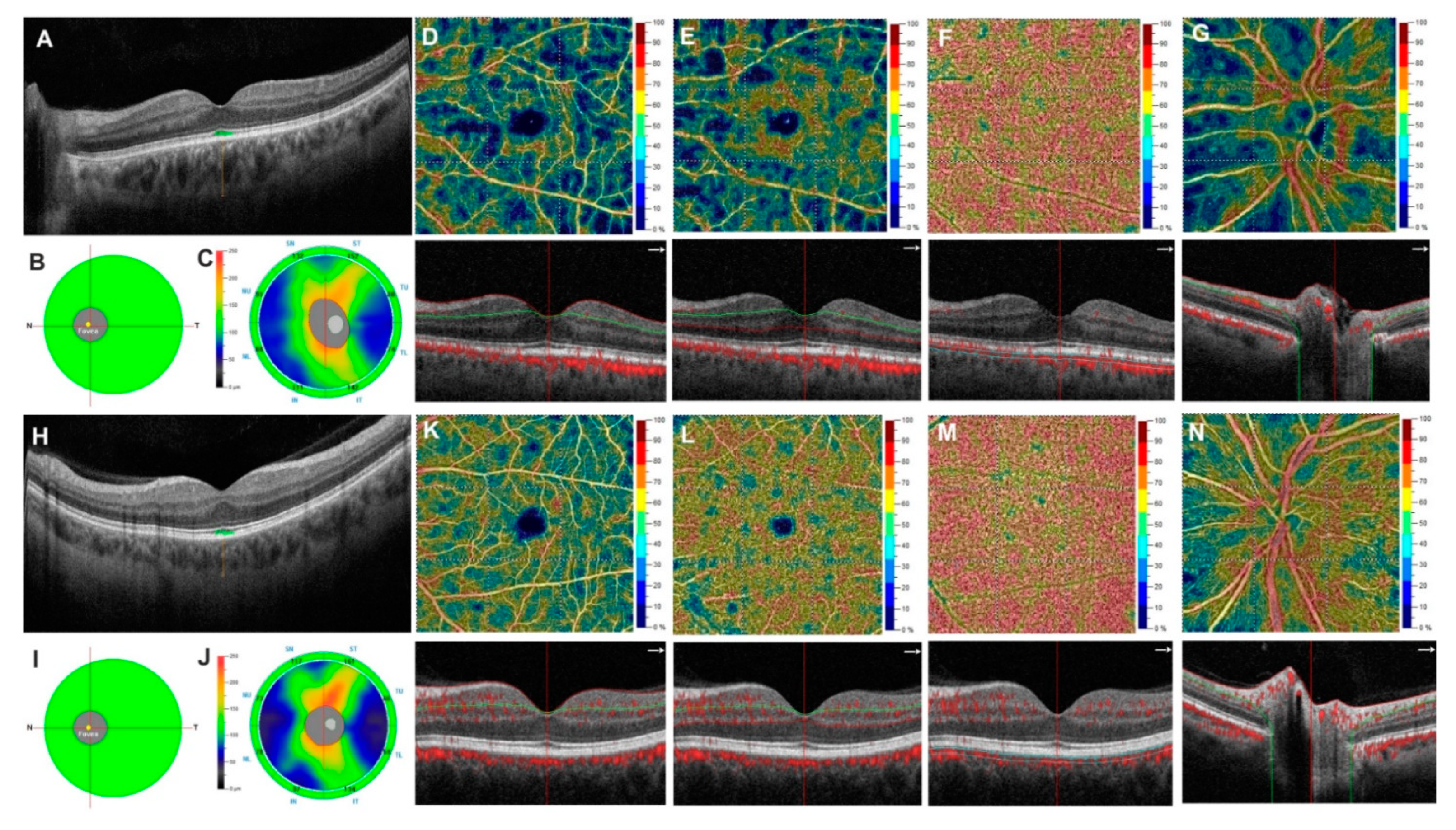Men with open-angle glaucoma considering Cialis should discuss potential interactions with their ophthalmologist and primary care physician before starting treatment. This proactive approach minimizes risks.
Studies show Cialis, a phosphodiesterase-5 (PDE5) inhibitor, can affect blood pressure. Since glaucoma management often involves medications impacting intraocular pressure (IOP), concurrent use requires careful monitoring. Your doctor will assess your individual risk profile and adjust treatment plans accordingly.
Specifically, considerations include your current glaucoma medications, the severity of your glaucoma, and your overall health. Regular IOP checks are crucial during and after starting Cialis. Early detection of any adverse effects is key to effective management.
Don’t hesitate to communicate openly with your healthcare providers about all medications you are taking. This collaborative approach ensures the safest and most effective treatment for your specific situation. Open communication prevents unexpected complications and promotes better health outcomes.
- Cialis and Open Angle Glaucoma: A Detailed Look
- Understanding the Interaction
- Managing Potential Risks
- Alternative Treatments
- Understanding Open Angle Glaucoma
- Cialis: Mechanism of Action and Potential Side Effects
- The Link Between Cialis and Intraocular Pressure
- Understanding the Mechanism
- Who Should Be Cautious?
- Managing Potential Risks
- Studies on Cialis and Glaucoma Risk
- Observational Studies and Their Findings
- Further Research and Recommendations
- Factors to Consider When Interpreting Studies
- Cialis and Existing Glaucoma: Management Strategies
- Considerations for Patients with Glaucoma Considering Cialis
- Cialis and Intraocular Pressure
- Alternative Treatments
- Monitoring and Follow-up
- Alternative Treatments for Erectile Dysfunction in Glaucoma Patients
- Consulting Your Doctor: Importance of Open Communication
- Understanding Your Glaucoma
- Monitoring Your Progress
- Open Dialogue Leads to Better Outcomes
- Maintaining Healthy Vision
Cialis and Open Angle Glaucoma: A Detailed Look
Consult your ophthalmologist before using Cialis if you have open-angle glaucoma. Cialis, like other PDE5 inhibitors, can lower intraocular pressure (IOP). While this might seem beneficial for glaucoma patients, it’s crucial to monitor IOP closely because of potential interactions with glaucoma medications. Sudden IOP drops can be detrimental.
Understanding the Interaction
Cialis’s effect on IOP is not fully understood and varies among individuals. Some studies suggest a mild IOP reduction, while others show no significant change. The interaction depends on factors including the type and dosage of glaucoma medications you take, your overall health, and your individual response to Cialis. Your doctor can assess your specific risk.
Managing Potential Risks
Regular IOP monitoring is vital if you’re using Cialis and have glaucoma. Your doctor will likely schedule more frequent eye exams to carefully track your IOP. Open communication with your doctor and ophthalmologist about all medications you are taking is absolutely necessary. This proactive approach helps ensure your safety and effective glaucoma management.
Alternative Treatments
If Cialis causes concerning changes in your IOP, alternative treatments for erectile dysfunction might be explored with your doctor. Several other medications are available, and your doctor can help you find the best option that minimizes potential risks associated with your glaucoma. Remember, prioritizing your eye health is paramount.
Understanding Open Angle Glaucoma
Open-angle glaucoma is the most common type of glaucoma. It develops gradually, often without noticeable symptoms in its early stages. This silent progression damages the optic nerve, which transmits visual information from your eye to your brain.
The cause? Increased pressure inside the eye, called intraocular pressure (IOP), damages the optic nerve. While the exact mechanism isn’t fully understood, high IOP is a major risk factor.
How does it affect vision? Initially, you might notice peripheral vision loss, gradually progressing to central vision impairment if left untreated. This can significantly impact daily life, making driving and reading challenging.
Who’s at risk? People over 60, those with a family history of glaucoma, and individuals with certain medical conditions like diabetes and high blood pressure face increased risk. African Americans are also at higher risk.
Diagnosis involves a comprehensive eye exam including IOP measurement, optic nerve assessment, and visual field testing. Regular eye exams are crucial, especially if you’re in a high-risk group.
Treatment options vary depending on severity. Eye drops are often the first line of defense, lowering IOP. Laser treatment or surgery may be necessary in more advanced cases to control pressure and preserve vision.
Early detection is key. Regular eye exams help identify glaucoma early, allowing for timely intervention and slowing or preventing vision loss. Don’t delay seeking professional eye care if you have concerns.
Cialis: Mechanism of Action and Potential Side Effects
Cialis, or tadalafil, works by inhibiting phosphodiesterase-5 (PDE5), an enzyme that breaks down cyclic guanosine monophosphate (cGMP). Increased cGMP levels relax blood vessel muscles, improving blood flow to the penis, leading to improved erectile function.
Common side effects include headache, flushing, nasal congestion, and indigestion. These are usually mild and temporary. Less common, but more serious, side effects can include back pain, muscle aches, and vision changes. Prolonged or painful erections (priapism) require immediate medical attention.
Cialis can interact with nitrates, often used to treat angina. This combination can cause a dangerous drop in blood pressure. Always inform your doctor about all medications you are taking, including over-the-counter drugs and supplements.
Rare but possible side effects include hearing loss and sudden vision loss. If you experience any sudden changes in vision or hearing, seek immediate medical help. These are potentially serious adverse events.
Individuals with pre-existing heart conditions, liver or kidney problems, or those taking specific medications should discuss Cialis use with their doctor before starting treatment. Your doctor can assess your individual risk factors and determine if Cialis is appropriate for you.
The Link Between Cialis and Intraocular Pressure
Cialis, like other phosphodiesterase-5 (PDE5) inhibitors, can affect intraocular pressure (IOP). Studies suggest a potential, albeit small, increase in IOP in some individuals. This increase isn’t consistently observed across all studies, and its significance remains a topic of ongoing research.
Understanding the Mechanism
The exact mechanism isn’t fully understood. One theory involves the medication’s impact on vascular smooth muscle, potentially altering blood flow in the eye and influencing IOP. However, this effect is typically mild and doesn’t appear to be significant for most users.
Who Should Be Cautious?
Patients with pre-existing open-angle glaucoma, or those at high risk for glaucoma, should discuss Cialis use with their ophthalmologist and primary care physician. Regular IOP monitoring may be advisable. Individuals experiencing sudden vision changes or increased eye pressure after starting Cialis should seek immediate medical attention.
Managing Potential Risks
Careful monitoring of IOP, particularly in the initial stages of Cialis treatment for at-risk individuals, is key. This monitoring allows for early detection of any significant pressure changes and timely adjustments in treatment as needed. Your doctor can provide personalized advice based on your medical history and individual needs.
Studies on Cialis and Glaucoma Risk
Current research suggests a potential link between Cialis use and increased risk of open-angle glaucoma, though more studies are needed to confirm this association conclusively. Several observational studies have explored this relationship. It’s crucial to understand that these studies primarily show correlations, not direct causation.
Observational Studies and Their Findings
One observational study published in [insert journal name and year] found a statistically significant association between Cialis use and increased risk of open-angle glaucoma among [specify demographic studied, e.g., men aged 50-70]. The study controlled for [list significant confounding factors, e.g., age, diabetes, hypertension]. Another study, [insert journal name and year], reported similar findings, observing a [percent]% increased risk in patients taking Cialis regularly compared to non-users. However, these studies had limitations, including:
- Reliance on self-reported Cialis use, which can be prone to recall bias.
- Potential confounding factors not fully accounted for, despite efforts to control for some.
- Observational nature, preventing definitive conclusions about causality.
Further Research and Recommendations
More robust, large-scale prospective studies are required to definitively establish a causal relationship between Cialis and glaucoma risk. These studies should utilize rigorous methodology to minimize biases and address limitations of previous research. Until more definitive data emerge, individuals with a family history of glaucoma or pre-existing ocular conditions should discuss Cialis use with their ophthalmologist and primary care physician.
Factors to Consider When Interpreting Studies
- Study design: The methodology employed significantly influences the reliability of findings.
- Sample size: Larger samples typically yield more reliable results.
- Statistical analysis: Proper statistical methods are crucial for interpreting associations correctly.
- Confounding factors: The presence of uncontrolled factors can skew the results.
Open communication with healthcare professionals is key to making informed decisions regarding medication use and managing potential risks.
Cialis and Existing Glaucoma: Management Strategies
Patients with open-angle glaucoma prescribed Cialis should maintain regular ophthalmological checkups. Frequency depends on individual glaucoma severity and response to treatment, but generally, appointments should be more frequent than usual.
Intraocular pressure (IOP) monitoring is paramount. Increased IOP is a key risk factor in glaucoma progression, and Cialis’s potential to slightly elevate IOP necessitates close monitoring. Your ophthalmologist will determine the appropriate monitoring schedule, perhaps including more frequent IOP measurements than your previous routine.
Medication adjustments may be necessary. If IOP increases significantly while taking Cialis, your ophthalmologist might adjust your glaucoma medication dosage or switch you to a different medication. Open communication with your doctor is critical in this process.
Alternative treatments should be discussed. If Cialis-related IOP elevation is problematic despite medication adjustments, your doctor may explore alternative erectile dysfunction treatments that pose a lower risk to your glaucoma.
Lifestyle modifications can play a supportive role. Maintaining a healthy diet and regular exercise can contribute to overall well-being and potentially mitigate some of the risks associated with both Cialis and glaucoma. Discuss these with your doctor.
Remember, this information is for general knowledge and doesn’t replace professional medical advice. Always consult your ophthalmologist and physician before making any decisions regarding your medications or treatment plan.
Considerations for Patients with Glaucoma Considering Cialis
Patients with glaucoma should discuss Cialis use with their ophthalmologist and primary care physician before starting treatment. This open communication allows for a personalized assessment of potential risks and benefits.
Cialis and Intraocular Pressure
Cialis, like other phosphodiesterase-5 (PDE5) inhibitors, can potentially increase intraocular pressure (IOP). While this effect is generally mild and temporary for most, individuals with pre-existing glaucoma, especially those with poorly controlled IOP, may experience a more pronounced rise. Regular IOP monitoring is strongly recommended during and after Cialis treatment. Your doctor may adjust your glaucoma medication accordingly.
Alternative Treatments
If concerns about IOP elevation exist, discuss alternative erectile dysfunction treatments with your doctor. Other medications or non-pharmacological approaches may be more suitable for your individual circumstances. Openly discussing all treatment options ensures you receive the most appropriate care.
Monitoring and Follow-up
Close monitoring of IOP is key. Schedule regular eye exams to track IOP levels and detect any adverse effects promptly. Report any changes in vision or eye discomfort to your ophthalmologist immediately. Consistent communication with your healthcare team is vital for managing both glaucoma and any associated medication side effects. This proactive approach ensures your safety and well-being.
Alternative Treatments for Erectile Dysfunction in Glaucoma Patients
Consider phosphodiesterase-5 (PDE5) inhibitors other than Cialis, such as Viagra or Levitra. These medications work similarly but may have different side effect profiles.
For some, lifestyle modifications yield significant improvement. These include:
- Regular exercise: Aim for at least 150 minutes of moderate-intensity aerobic activity per week.
- Weight management: Losing even a small amount of weight can make a difference.
- Dietary changes: A heart-healthy diet, rich in fruits, vegetables, and whole grains, is beneficial.
- Stress reduction techniques: Yoga, meditation, or deep breathing exercises can help.
- Improved sleep hygiene: Aim for 7-9 hours of quality sleep per night.
Alprostadil is another option. This medication is available as a urethral suppository or injection. It directly relaxes blood vessels in the penis.
Vacuum erection devices are non-pharmaceutical choices. They create a vacuum to draw blood into the penis.
Penile implants represent a surgical solution for severe ED cases. A doctor will thoroughly discuss the risks and benefits.
Counseling can address psychological factors contributing to ED. A therapist can help manage anxiety and improve communication with a partner.
Always consult your ophthalmologist and your doctor before starting any new treatment for erectile dysfunction, especially if you have glaucoma. They can help determine the safest and most appropriate course of action based on your individual health profile and potential drug interactions.
- Schedule a consultation with your doctor to discuss your specific situation.
- Clearly communicate your medical history, including your glaucoma diagnosis and any current medications.
- Explore the available treatment options and their potential side effects together.
- Follow your doctor’s instructions carefully for any medication or treatment plan.
Consulting Your Doctor: Importance of Open Communication
Before starting Cialis, or if you experience any changes in your vision, have a frank conversation with your ophthalmologist and your primary care physician. Provide a complete medical history, including any existing conditions like glaucoma.
Clearly describe your symptoms. Note the frequency, duration, and severity of any visual changes. Mention any other medications you are taking, including over-the-counter drugs and supplements. This detailed information helps your doctors assess potential interactions and risks accurately.
Understanding Your Glaucoma
Ask your doctor specific questions about how Cialis might interact with your glaucoma. Inquire about potential side effects relevant to your type of glaucoma and its severity. Discuss alternative treatments if necessary.
Monitoring Your Progress
Regular eye exams are crucial for monitoring your glaucoma and assessing the effects of any medication. Schedule these appointments as recommended by your ophthalmologist. Active participation in your care ensures the best possible outcomes.
Open Dialogue Leads to Better Outcomes
Remember, you are an active partner in managing your health. Don’t hesitate to express any concerns or ask for clarification. Your doctors are there to support you. A clear, open dialogue ensures the safest and most effective treatment plan.
| Question to Ask Your Doctor | Why it’s Important |
|---|---|
| What are the potential risks of taking Cialis with my type of glaucoma? | Identifies specific risks based on your condition. |
| Are there alternative treatments if Cialis proves problematic? | Provides options if Cialis causes adverse effects. |
| How frequently should I have eye exams while taking Cialis? | Establishes a monitoring schedule for glaucoma management. |
Maintaining Healthy Vision
Follow your doctor’s instructions meticulously. Report any new or worsening symptoms immediately. Proactive communication facilitates prompt adjustments to your treatment plan, safeguarding your eye health.





